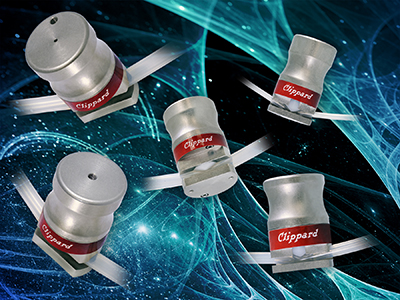The flow capacity of valves, connectors and other components in pneumatic systems is often expressed in Cv. (See, “What is the flow coefficient Cv?“) However, other methods and standards are also available to express flow capacity. Here are some important alternatives.

Sonic conductance, effective orifice, normalized flow and actual measurements are all ways to rate component flow capacity.
Sonic conductance
In place of Cv, some manufacturers choose to publish the sonic conductance, C, of a pneumatic component. This is defined by ISO 6358 and focuses on the component’s conductance and the critical pressure ratio. A valve sees sonic flow conditions when it has reached the maximum possible flow. Increasing pressure once sonic flow has been reached no longer increases flow. This condition is also known as choked flow. The critical pressure ratio is the ratio between downstream pressure and upstream pressure when the component has reached the maximum flow condition.
Many manufacturers argue that subsonic flow data (C) is more reliable than Cv because it is based on the maximum flow through a valve. With the C number plugged into an equation, it is possible to calculate a flow rate for any pressure differential. However, some confuse C values with Cv, which can lead to mistakes and incorrectly sized components.
Effective orifice
The effective orifice size of a valve is relatively straightforward. Data correspond to actual flow rates that would be achieved by simply putting an orifice in line. It is also known as the effective sectional area (the area of the effective orifice) and relates to the sonic conductance — as the effective flow orifice is generally determined by empirically testing for choked-flow conditions.
The effective orifice method can have benefits because flow can be expressed in one number that is easy to understand. Many available charts show similar Cvs and flow rates for orifice sizes, but there is not an industry standard on testing valves to achieve an effective orifice. Some flow calculations use orifice sizes, so having the effective orifice size of a valve can reduce conversions and extra calculations in certain applications.
While this approach is great for general flow conditions, it can also be confusing because some manufacturers publish an orifice size which is not an effective orifice. Factors such as turbulence or poppet stroke of the valve can permit actual valve orifice flow that’s substantially different from the effective orifice flow.
Normal liters per minute
Outside the United States, it is common for pneumatic component specifications to be published with a flow rate in normal liters per minute (Nl/min). Nl/min is a flow rating at a specific pressure with a 1 atm differential between the upstream pressure and pressure downstream from the component. Flow is then converted to “normal” conditions, which are not always the same. Some commonly used normal conditions include:
• Temperature at 0°C, pressure at 1 atm, 0% relative humidity.
• Temperature at 20°C, pressure at 1 atm, 0% relative humidity.
• Temperature at 21°C, pressure at 1 atm, 0% relative humidity.
• Temperature at 0°C, pressure at 1 bar, 0% relative humidity.
While these variances have minimal effect on flow ratings, the absence of a published standard for the normal condition creates some confusion in the industry. The normalized liter per minute method can be confusing because it takes the actual flow rate at a pressure differential and converts it to a flow rate at “standard” conditions. Different manufacturers have different standard conditions, but most publish Nl/min at a 1 atm differential. The 1 atm differential may be with 6 atm on the inlet and 5 atm on the outlet to achieve the 1 atm differential. This is important because that differential of 1 atm is not the same flow rate as 1 atm on the inlet of a valve and the exhaust to atmosphere. Flow rates between Nl/min and l/min to atmosphere can be vastly different. The Nl/min generally requires the engineer to calculate the flow rate back to “standard” conditions.
Capacity with actual flow
Some manufacturers simply provide the actual flow the valve achieves at a specific pressure differential. This flow rate is often published for the maximum pressure rating of a valve and, therefore, expresses the maximum flow rate for that component. Other manufacturers take this a step further and publish flow charts that express performance over the entire pressure range of the component. And some manufacturers provide a flow chart with this data to show how the flow rate changes as the pressure differential to atmosphere changes.
This makes it easy for engineers to determine the flow rate at a specific pressure and greatly reduces the possibility for confusion on the data. However, there is no industry standard for testing the actual flow rate of pneumatic components.
Thus, there are several ways to represent the flow capacity of a component. The variety of methods used to express flow can vary from manufacturer to manufacturer as well as from one country to another — which can seem overwhelming. However, with a basic understanding of the most popular options, engineers can apply them properly in pneumatic systems to ensure properly sized components.
Information for this story provided by Mike Kettering, Technical Sales Specialist at Clippard Instrument Laboratory.
Filed Under: Pneumatic Tips